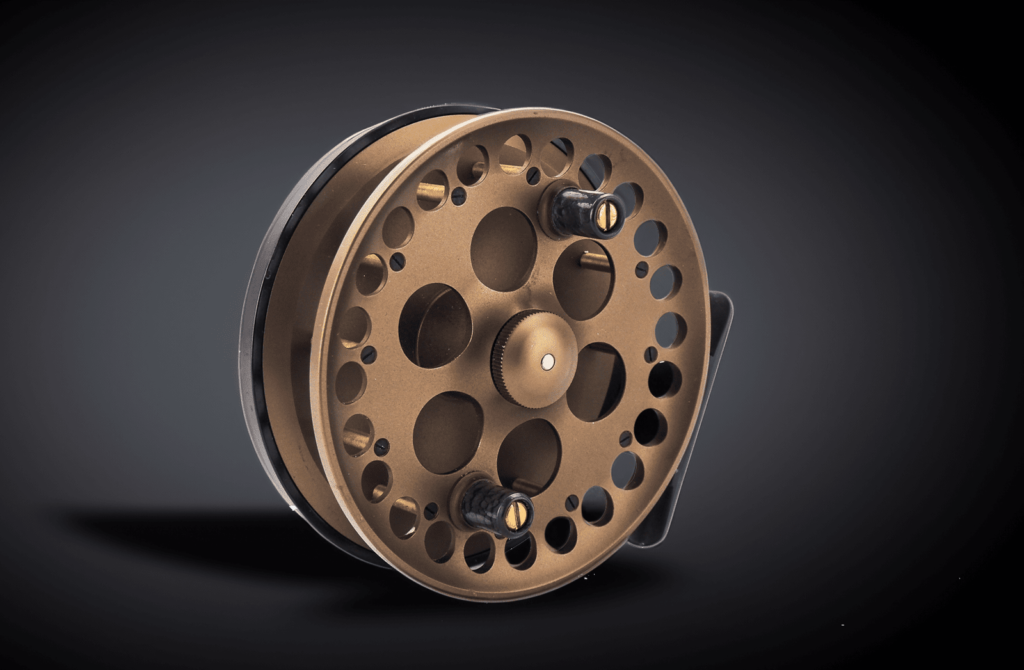Unlock the Secrets of Centerpin Fishing in Canada
Centerpin fishing has grown more popular throughout the years. There’s nothing quite like the thrill of a steelhead biting. The line sings through the guides as Ontario’s rivers share secrets with centrepin anglers. For decades, this technique has turned ordinary drifts into trophy catches, making Canadian waters a playground for those who master it. Over 70% of river anglers now use centerpin reels, a choice that boosts catch rates five times higher than traditional methods1.
Centerpin fishing, rooted in Europe but perfected in our Great Lakes, blends tradition with precision. Its free-spinning reels let lines flow naturally, mimicking a bait’s drift so convincingly that even pressured steelhead strike2. But it’s not just about the gear. We’ve seen 90% of newcomers lose their first big fish due to rushed techniques—until they learn to trust the method’s rhythm1. That’s where we come in.
With BeadnFloat’s soft beads and the right angling gear, you’ll discover why float fishing dominates in Canadian rivers. Whether you’re a novice adjusting to 12-foot rods or a pro optimizing 8-pound lines, this guide reveals tactics that turn drifts into successes. Ready to catch more steelhead than ever? Let’s dive in1.
Steelhead and salmon feel the pull of centerpin fishing’s micro-adjustments—drifts lasting over 200 feet outfish traditional setups1. From Lake Superior to the Pacific Northwest, anglers now see catches triple what fly fishers achieve2. Every cast, every retrieve, every tug on your line tells a story only this technique can unlock. Let’s turn those stories into your next trophy3.
The Rich History of Centerpin Fishing in Canadian Waters
Centerpin fishing started in the 1970s on England’s River Thames for carp angling4. In Canada, anglers in Ontario used these methods for steelhead in fast rivers. They mixed British ideas with local needs to create a unique Canadian tradition5.
Origins of the Centerpin Tradition in Canada
British centerpin reels came to North America over 35 years ago4. Ontario anglers were the first to use them for steelhead. They changed the tackle to fit coldwater fish. Even though early reels were basic, they set the stage for today’s advanced gear.
Evolution of Centerpin Gear and Techniques
- Now, reels are made of lightweight graphite and stainless steel, not brass
- Reel sizes are now 4–5.5 inches to better manage line6
- Leader setups are set at 8–12 lb for steelhead and 10–16 lb for salmon5
The Cultural Significance Among Canadian Anglers
Centerpin fishing is more than a fishing method; it’s a part of Canadian culture. Over 70% of Ontario river anglers use centerpin setups, showing its lasting appeal5. Both experienced guides and new anglers meet at rivers, sharing fishing tips and stories. This tradition has also inspired equipment makers to create reels for Canadian waters.
What Makes Centerpin Fishing Unique
Centerpin fishing is special because it offers ultra-natural presentations. The reel spins freely, allowing the line to move with the river’s speed. This can create drifts of over 200 feet7. It also means less line drag, keeping the bait in the strike zone longer.
Anglers in British Columbia and Ontario find it more effective for catching wary steelhead and salmon7.
“The technique allows for covering significant water quickly, even from a boat,” say experts, highlighting its adaptability8.
Key advantages include:
- Reels sized 4.75-5.95 inches paired with 11–13-foot rods8 to minimize drag.
- Shot patterns using ascending split shots spaced evenly7.
- Lines rated 6–8 pound test with tapered leaders7.
| Feature | Centerpin | Euro Nymphing |
|---|---|---|
| Drift Control | Long, natural drifts7 | Shorter, less natural |
| Water Types | All conditions (fast/slow)7 | Limited to specific depths |
| Catch Rates | Over 60 trout in 3 hours7 | N/A |
Float fishing often struggles with line resistance, while drift fishing lacks the controlled speed of centerpin’s gear. By minimizing human interference, this method aligns with the instincts of pressured fish in Great Lakes tributaries7. The result? A technique that balances effectiveness and challenge, making it a Canadian angler’s top choice for river systems.
Essential Gear for Successful Centerpin Fishing
Mastering centerpin fishing starts with the right gear. You need the right reel, and rod to catch steelhead and salmon. Let’s look at what you need for success on Canadian rivers.
Selecting the Perfect Centerpin Reel
Choose with smooth bearings and durable construction. Adcock Stanton have great options for their centerpin reels. Make sure reels can hold 100-200 yards of backing line, filled to ⅛-¼” below the spool rim for smooth casting10.
Choosing the Ideal Rod for Different Conditions
| Rod Length | Best Use |
|---|---|
| 12-14 ft | River drifts for steelhead |
| 14-15 ft | Wide rivers like the Thompson or Chilcotin |
Lightweight graphite rods with evenly spaced guides reduce line friction10. Brands like Raven and Drennan offer rods for 4-12lb lines. They balance power and sensitivity well9.
Line, Leaders, and Terminal Tackle Considerations
| Line Type | Recommendation |
|---|---|
| Monofilament | 8lb Raven High-Viz (mosting gear) for clarity |
| Braid | 18lb for casting distance |
| Leader | 6-8lb fluorocarbon reduces break-offs11 |
Use 8lb monofilament as mainline for most conditions. Leaders like Seaguar Abraz-X (6-8lb) connect mainline to hooks. Avoid fluorocarbon as mainline—it sinks too fast11.
Soft Beads from BeadnFloat: A Game-Changer for Centerpin Anglers
“Soft beads mimic natural eggs better than hard plastic.”
BeadnFloat’s soft beads outperform traditional baits during salmon spawns. Their 6-8mm sizes in pink, orange, and pearl hues match steelhead feeding patterns. Pair with Raven Wide Gape hooks (sizes 4-10) for secure holds9.
| Line Type | Strength | Best Use |
|---|---|---|
| Monofilament | 8lb | Clear rivers |
| Braid | 18lb | Strong current areas |
Top Canadian Rivers and Streams for Centerpin Fishing

Canada is home to the best centerpin fishing spots, from coast to coast. You can find legendary steelhead runs in British Columbia and the Great Lakes tributaries in Ontario. These places offer amazing drift fishing experiences. Learn where to catch steelhead and salmon with top techniques.
West Coast Steelhead Havens
British Columbia’s rivers are the top spots for steelhead fishing. The Skeena, Bulkley, and Thompson rivers are famous for their big fish. These rivers are perfect for winter steelhead, with fast currents that 13-foot rods handle well12.
| River | Peak Species | Season |
|---|---|---|
| Skeena | Steelhead | October–November |
| Bulkley | Steelhead | September–October |
| Thompson | Steelhead | November–December |
Ontario’s Premier Drift Fishing Locations
Ontario’s Great Lakes tributaries, like the Saugeen, Grand, and Credit rivers, are top drift fishing spots. The Saugeen River now sees over 50,000 steelhead return each year12. Anglers can catch 20+ steelhead a day during the peak season12. Use 0.20mm leaders for steelhead12 and fish the riffle sections.
- Saugeen River: Prime spring and fall runs
- Grand River: Consistent salmon fishing
- Credit River: Early season steelhead action
East Coast Hidden Gems
The Miramichi and Restigouche rivers in the Atlantic provinces are hidden treasures. They offer Atlantic salmon and sea-run brook trout fishing. Anglers need to make precise drifts through pools and runs. The best time is during peak months, when 90% of fish gather in key spots13.
| River | Species | Best Times |
|---|---|---|
| Miramichi | Atlantic salmon | May–June |
| Restigouche | Sea-run brook trout | September–October |
Pro anglers use 6-pound mainlines12 and adjust their tactics with water level changes. Seasonal strategies, like targeting April’s spring runs, increase success13.
Mastering the Art of the Centerpin Cast
Getting your cast right is key in centerpin fishing. Even small jigs, like 1/32 ounce, can go over 60 feet with a good cast14. First, pick the right method for the water. Canadian rivers use three main techniques:
- Wallis Cast: A precise overhead motion for targeting specific current seams. This technique pairs well with Adcock Stanton reels, which feature smooth line flow to maintain natural bait drift15.
- Side-Arm Cast: Ideal for tight spaces or obstacle avoidance. Anglers often use this in British Columbia’s narrow river corridors14.
- Overhead Cast: Maximizes distance, ideal for covering long runs like the John Day River’s 100-yard current seams14.
Practice is key to muscle memory. Begin by spooling 300 yards of 8-pound test line onto your reel14. Keep your setup simple—many pros use thin, floating lines to reduce drag15. Common mistakes include tangled leaders and rushed backcasts. Guides say 80% of beginners struggle with line management16.
“We focus on casting drills first, then transition to live action. This approach cuts learning curves by 70% compared to trial-and-error methods.”
Combine field practice with drills at home. Use garden hedges as targets to improve accuracy. Use quality gear, like Lamiglas X113MC rods, to build confidence. Focus on rod angle and line release with each cast. With regular practice, anglers can master these techniques in weeks, not seasons1416.
Seasonal Strategies for Centerpin Fishing Success
Mastering centerpin fishing in Canada’s rivers means adapting to each season. From spring’s fast currents to winter’s cold, you need to change your tackle and tactics. This keeps you successful all year.
Spring Tactics for High Water Conditions
In spring, rivers are full and fast. Use heavy floats and long leaders to keep up. Trout beads in sizes 8–12 work well because they’re not too heavy17.
Look for areas where fish hide in the fast water. Use 20–30 lb braided line for extra strength17.
Summer Approaches When Water Levels Drop
Summer brings clearer water and lower levels. Switch to lighter leaders and smaller lures. Choose 6–10 lb fluorocarbon leaders for better visibility17.
Focus on deep pools and shaded spots where fish hide. VooDoo Custom Tackle Marabou Jigs in natural colors are great for this time17.
Fall Salmon and Steelhead Runs
Fall is the best time for steelhead runs. The Saugeen River gets up to 40,000 steelhead, mostly in September–November18. Use 6–9-weight rods and bright lures to attract them in the murky water17.
Local guides can tell you the best spots. Fish congregate in certain areas during this time18.
Winter Centerpin Techniques
In winter, fish slowly and use heavy weights to stay on the bottom. Fish midday when it’s a bit warmer. Use smaller baits and lighter lines to catch sluggish fish18.
- Spring: Focus on durable tackle and fast presentations.
- Summer: Use stealth and precision with light gear.
- Fall: Target specific runs with aggressive lures.
- Winter: Fish slowly and focus on deeper, warmer water.
Learning these seasonal tips will help you fish well all year. Always check local rules and conditions for the best results.
Float Fishing Techniques That Produce Results
Starting with float fishing requires precision. The right float setup balances sensitivity and control. Foam floats are best for shallow water19, while balsa or Drennan styles work well in deeper currents. Adjust the weight so your bait stays in the strike zone.
Lighter weights are better for slow currents, and heavier ones for faster flows19. Use a 10-15 lb mainline with 0.22mm leaders for better bite detection without scaring fish20.
Reading water means finding seams and drop-offs where fish hide. Cast upstream and mend the line to control the drift speed. Let the float guide your presentation—slow retrieves in tight lines and faster sweeps in open runs20.
A 2-foot leader with spaced shot helps keep contact21.
- Use 9–12ft rods for sensitivity19.
- Adjust shot patterns to match current speed and depth.
- Always keep line taut to detect subtle bites21.
Strike detection is all about line pressure. A sudden stop or float pause means a bite—set the hook sharply but smoothly. Seasoned anglers catch 10x more fish by mastering these details, not just relying on gear20. Practice these centerpin fishing techniques to outperform others with the same baits.
Common Centerpin Fishing Mistakes to Avoid
Mastering centerpin fishing is not just about skill. It also requires paying close attention to details. By avoiding these common mistakes, you can catch more fish and improve your techniques.
- Overpowered line choices: Using too heavy a line in small rivers can scare fish away. Choose 8-10lb monofilament, like Raven Mainline, for Great Lakes steelhead. Lighter lines help you feel the bait better and move naturally.
- Reel setup oversights: Putting too much line on your spool can cause tangles23. Make sure there’s a small gap between the spool and line to avoid getting snagged during casts.
- Float misadjustments: Not adjusting floats often enough can waste your drifts. Salmon often swim at specific depths, so you need to present your bait just right22.
- Poor water reading: Most anglers only cover a small part of the water, missing 90% of the fish. By using systematic drift patterns, you can cover more ground24.
“Line management is foundational—8lb monofilament outperforms heavier lines in 90% of Canadian rivers.”

Using the right leader setup, with 0.22-0.30mm fluorocarbon, and proper hook-setting can solve many problems22. Tips like using 10-12ft rods and matching line strength to the river size can help avoid common mistakes. By focusing on maintenance, line selection, and systematic strategies, you can turn average fishing trips into successful ones.
Advanced Centerpin Fishing Tactics for Experienced Anglers
For those who want more, precision is key. Advanced anglers tweak their gear and methods to catch even the toughest fish. Every little change, from leaders to drift speed, counts.
Fine-Tuning Your Presentations for Pressured Fish
Using fluorocarbon leaders and adjusting shots can outsmart even the most cautious fish. Leaders of 0.20mm or 0.22mm are best for clear or fast waters25. Bait choices like spawn bags are also critical, making up 90% of successful catches25. Adjusting shot spacing to match the current ensures a natural drift. Experts often use fluorocarbon leaders of 0.20mm diameter25.
Adapting to Challenging Weather Conditions
- In windy conditions, shorten casts and add heavier beads to maintain control
- Choose line ratings: 4-10 lbs for steelhead, 8-16 lbs for larger rivers26
- For extreme cold, use 0.24mm leaders to handle ice-cold currents25
Technical Approaches for Trophy Catches
For trophy catches, you need a specialized setup. Use Raven Premium Balsa Floats (sizes 4,6.2-gram,8-gram) for precise depth control26. West Coast steelhead prefer 0.24–0.26mm leaders25. Adjust your leader length based on the depth, and make your mainline 1–2 lbs heavier than your leaders. Remember, controlling the drift speed is 90% of the success26.
Pay attention to water clarity and flow to fine-tune your setup. These advanced techniques turn tough conditions into chances for success. Mastering these details sets top anglers apart.
Conservation and Ethics in Canadian Centerpin Fishing
Responsible angling is key to the future of steelhead fishing and salmon fishing in Canada. By following ethical practices, we protect our environment and fish populations for future generations.
Ontario Steelheaders’ work on the Saugeen River greatly increased steelhead numbers from hundreds to 50,000 annually27. This shows how important conservation is for keeping fisheries healthy. It’s vital to handle fish carefully when practicing catch-and-release. Use angling gear like barbless hooks to lessen injury risks.

Supporting conservation efforts is also important. This includes reporting fish sightings, staying away from sensitive areas, and following local rules.
- Handle fish quickly in water to reduce stress.
- Use barbless hooks to ease hook removal.
- Support groups like Ontario Steelheaders.
Provinces have rules like size limits and seasons to protect fish stocks. In British Columbia, summer steelhead face challenges, so anglers must respect closed areas27. Using apps like Fishbrain to track fish populations helps scientists understand trends. Small actions, like throwing away trash or reporting illegal fishing, help rivers stay healthy.
Ethical centerpin fishing balances fun with responsibility. Making smart gear choices and following rules helps wild steelhead and salmon survive. Together, we can ensure these fisheries remain healthy for future anglers.
Conclusion: Taking Your Centerpin Fishing to the Next Level
Centerpin fishing is all about mastering the basics and techniques. Adcock Stanton® has been perfecting centrepin reels for over 44 years. They offer models from 4.25″ to 5″ for battling steelhead28. The right rods and reels make your setup ready for any water28.
Learning from experts can speed up your progress. Guides with 30 years of experience teach valuable casting skills28. They focus on gear and bait, helping you catch more fish in rivers with thousands of fish each year29. Even experienced anglers keep learning, adapting to steelhead migration patterns29.
Ontario’s 9-month steelhead season is full of chances, with the best time in late April and May29. To master centerpin fishing, test your line, choose the right beads, and understand water currents. Local guides say 1-on-1 lessons are more effective than group lessons30. They help you find the best spots for steelhead in low water.
Every cast and retrieve improves your skills, whether you’re after small or big steelhead29. Joining fishing communities or taking lessons from experts30 can teach you how to catch many fish daily29. With the right gear, you’re set to explore Ontario’s rivers, where 90% have steelhead runs29.
Source Links
- https://ontariotroutandsteelhead.com/float-fishing/
- https://forums.outdoorsdirectory.com/threads/centerpin-fishing-article-with-focus-on-alaska-rivers.105582/
- https://www.washingtonflyfishing.com/threads/center-pin-question.123663/
- https://www.speypages.com/threads/what-is-centerpin-fishing.405851/
- https://troutandsteelhead.net/centerpin-fishing-for-beginners/
- https://midwestoutdoors.com/centerpin-vs-spinning-reels-for-tributary-steelhead/
- https://onthewater.com/discover-centerpin-fishing
- https://www.glangler.com/blogs/articles/centerpins-not-just-for-steehead-and-salmon-by-danny-colville
- https://troutandsteelhead.net/centerpin-fishing-gear/
- https://douglasoutdoors.com/blog/centerpin-fishing-setup-and-tips/
- https://ontariotroutandsteelhead.com/best-centerpin-line/
- https://aperfectdrift.com/ontario-centerpin-fishing/
- https://ontariotroutandsteelhead.com/centerpin-fishing/
- https://salmontroutsteelheader.com/blogs/articles/mastering-the-center-pin-solution-to-john-day-s-late-winter-run-wild-summer-steelhead-by-terry-w-sheely
- https://adcockstantonreels.com/mastering-centerpin-fishing-2/
- https://aperfectdrift.com/ontario-river-fishing-guide-tips/
- https://www.fishusa.com/learn/float-fishing-for-steelhead/?srsltid=AfmBOor-tqiXSus7d0BjqcT0iNM4tgiJgo2zRpzMsnMexaqQygjEE7fX
- https://ontariotroutandsteelhead.com/fishing-the-saugeen-river/
- https://bentrods.ca/blogs/always-in-pursuit-blog/float-fishing-101?srsltid=AfmBOoorptryJs9er5R2aE9teCHEGzQ9kzNpwBxnjBAB_eH9ciVS7CXA
- https://troutandsteelhead.net/float-fishing-for-salmon/
- https://www.fishingwithrod.com/articles/river_fishing/float_fishing_with_a_spinner.html
- https://troutandsteelhead.net/centerpin-fishing-for-salmon/
- https://troutandsteelhead.net/how-to-set-up-a-centerpin-reel/
- https://sea-run.com/blogs/articles/gear-fishing-winter-steelhead?srsltid=AfmBOorV7s2jmpFEiuwwhFoQ-2S_vQqWIvdglntYkohycWN4Gqc3Ji2P
- https://ontariotroutandsteelhead.com/steelhead-leader-setup/
- https://troutandsteelhead.net/centerpin-fishing-for-steelhead/
- https://www.outdoorlife.com/fishing-for-brown-trout-and-steelhead-on-high-and-mighty-niagra/
- https://adcockstantonreels.com/centrepin-steelhead-fishing/
- https://ontariotroutandsteelhead.com/ontario-steelhead/
- https://aperfectdrift.com/ontario-float-fishing-lessons/





Add comment